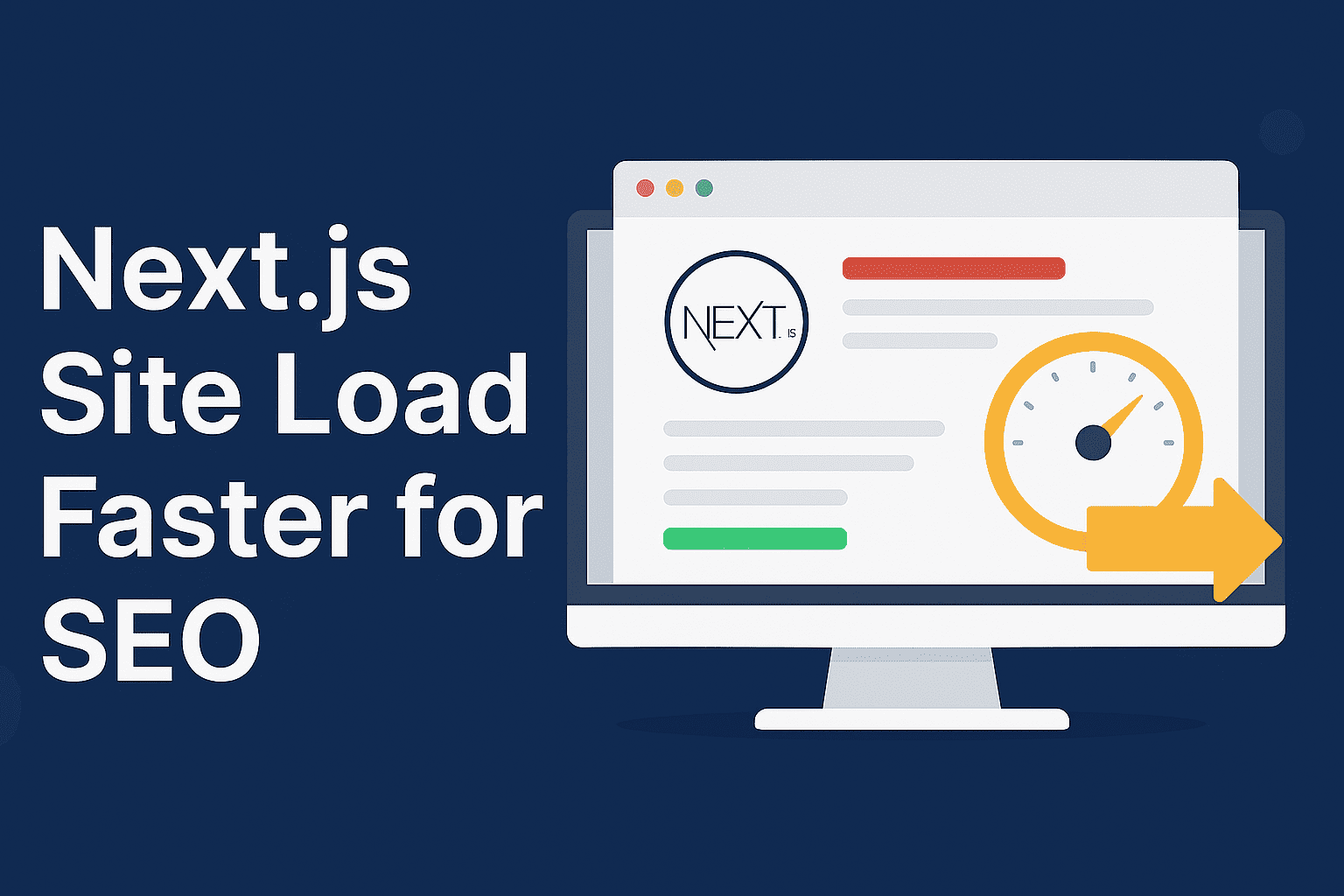How to Make Your Next.js Site Load Faster for SEO

1. Use Optimized Images
Compress and resize images before uploading.
Use modern formats like WebP.
Always use lazy loading for images that are not immediately visible.
2. Choose a Fast Hosting Provider
Platforms like Vercel (Next.js' native host) are highly optimized for performance.
They include built-in CDN, caching, and automatic optimization.
3. Avoid Heavy Plugins and Tracking Scripts
Remove unnecessary third-party scripts (chat widgets, pop-ups, etc.).
Use only essential analytics (Google Analytics, not 5 tools doing the same thing).
4. Keep Pages Lightweight
Don’t overload pages with large videos or oversized images.
Use minimal animations and external assets.
5. Use a CDN (Content Delivery Network)
A good CDN delivers your site content from the server closest to the visitor.
If you're using Vercel or Netlify — good news, they already include this!
6. Enable Browser Caching
This allows returning visitors to load your site faster.
Hosting platforms usually handle this automatically.
7. Check Your Core Web Vitals
Use Google PageSpeed Insights or GTmetrix
Focus on improving:
LCP (Largest Contentful Paint) – Speed of loading your main content
INP (Interaction to Next Paint) – Responsiveness
CLS (Cumulative Layout Shift) – Stability of your layout
8. Keep Content SEO-Friendly
Use clear headings (H1, H2...) with relevant keywords.
Add meta titles, descriptions, and structured content.
Keep your design clean and easy to navigate — Google loves a good user experience!
🎯 Why It Matters for SEO
Faster sites = higher rankings + happier users
Google now uses page speed and user experience as ranking factors
A slow site = higher bounce rate = lower ranking